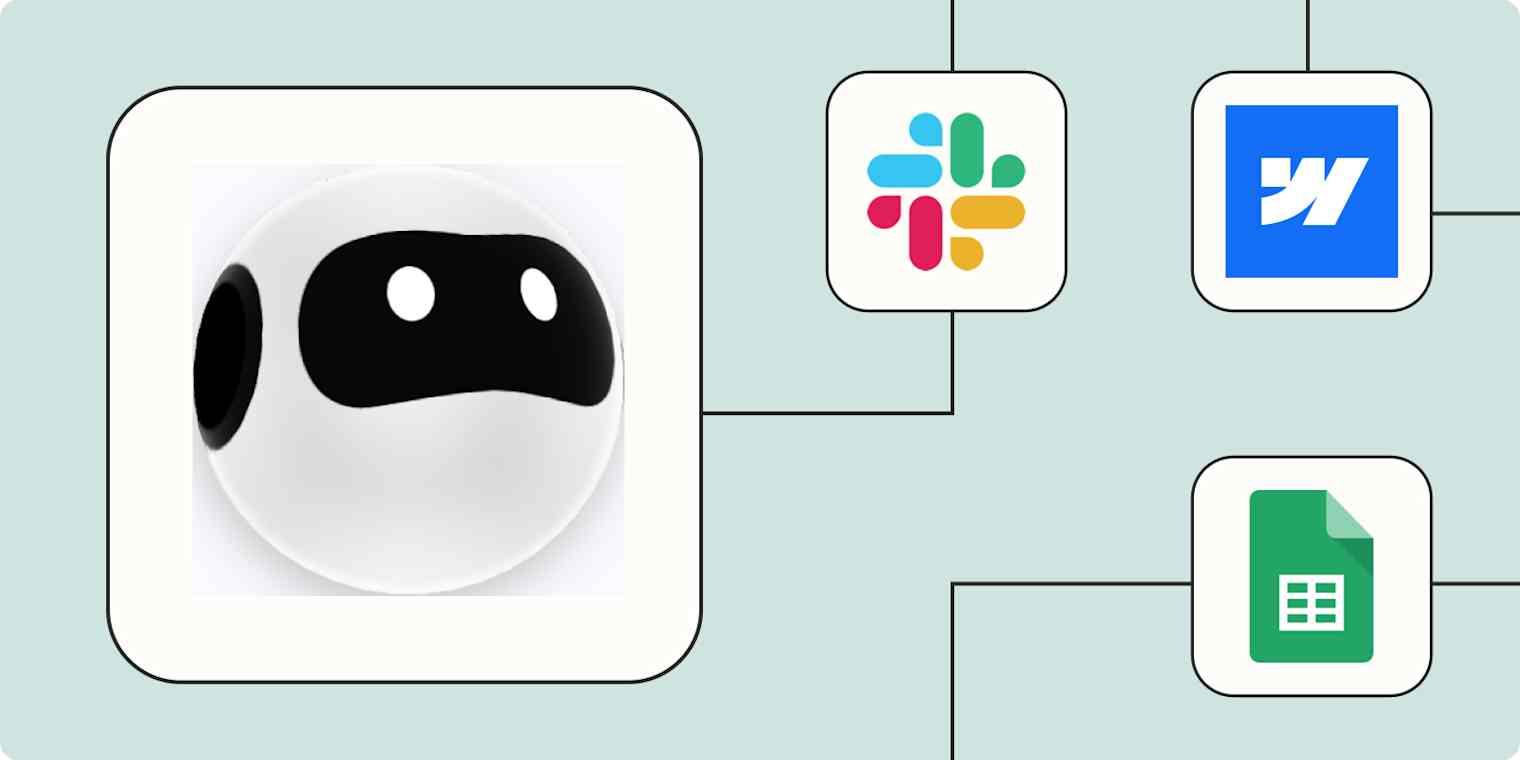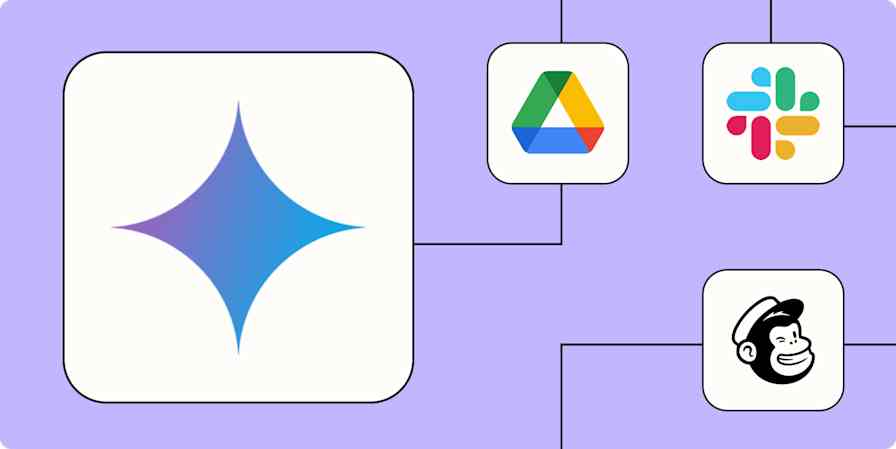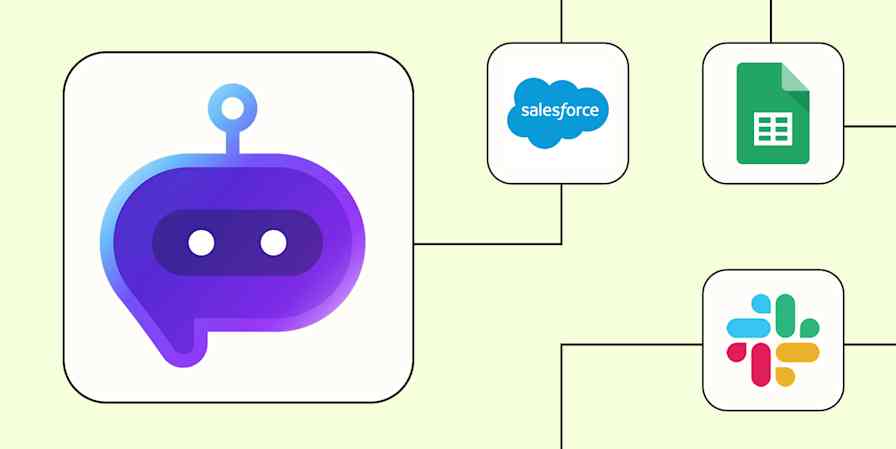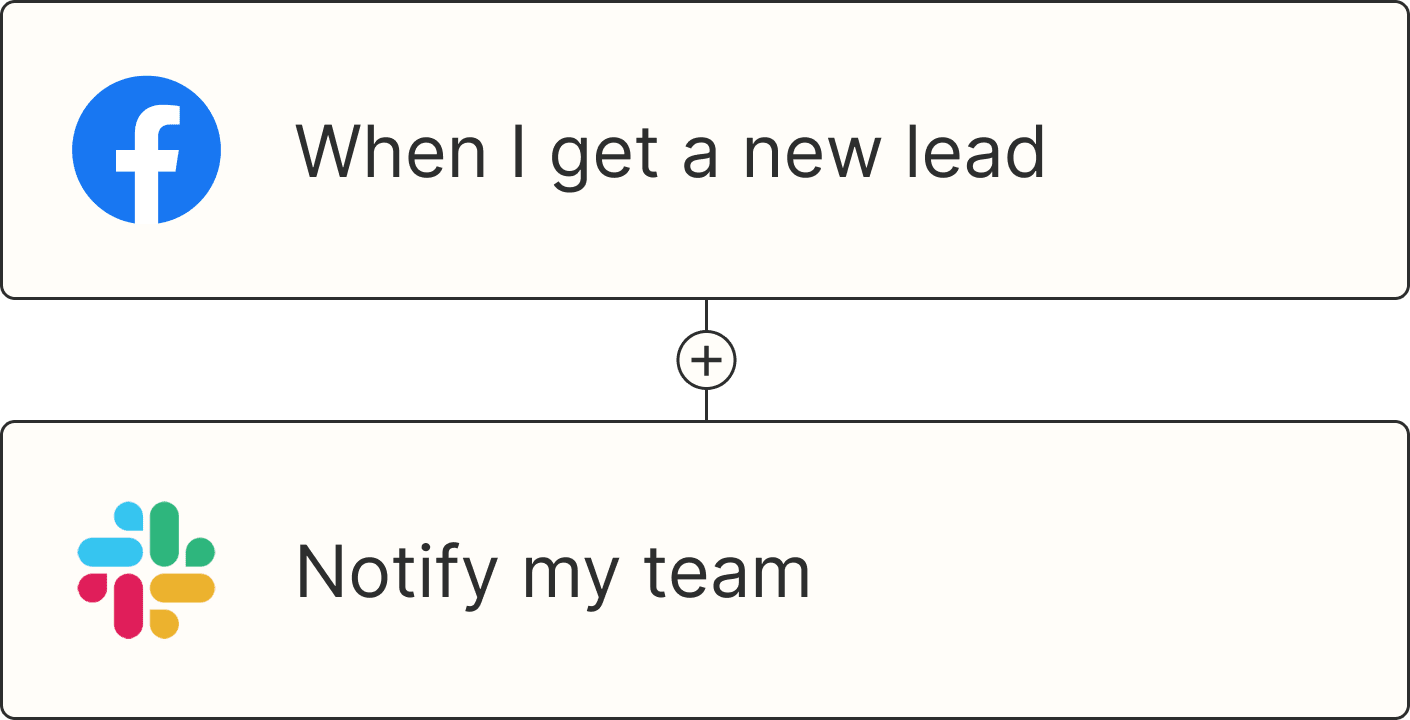Until recently, turning raw web data into something useful meant hours of manual scraping or writing custom scripts just to pull the exact insights you needed. Fortunately, with tools like Browse AI, you can easily extract data from any website so that you can monitor changes (like competitor pricing or product inventory) automatically.
But data alone isn't enough. You still need a way to route, process, and act on it at scale. That's where Zapier comes in.
With Zaps—our automated workflows—you can connect Browse AI to thousands of apps, enrich scraped data with AI, and send it exactly where it needs to go. It's AI orchestration for the modern tech stack: intelligent, dynamic, and always on. Here's how to get started.
Zapier is the most connected AI orchestration platform—integrating with thousands of apps from partners like Google, Salesforce, and Microsoft. Use interfaces, data tables, and logic to build secure, automated, AI-powered systems for your business-critical workflows across your organization's technology stack. Learn more.
Table of contents
To get started with a Zap template—what we call our pre-made workflows—just click on the button. It only takes a few minutes to set up. You can read more about setting up Zaps here.
Connect Browse AI with your spreadsheet app
If you're anything like me, you likely spend a good chunk of your workday in your spreadsheet app. Spreadsheets are great tools for storing information, analyzing data, and performing calculations. But rather than keeping your scraped web data in a silo where you have to check manually for updates, why not automate a process to sync that data automatically to your favorite spreadsheet tool?
With Zapier, we can automatically pull your scraped data from Browse AI into your spreadsheet app of choice—be it Google Sheets, Airtable, or Excel. Whether you're compiling market research, tracking prices, or aggregating content, automating the flow of data directly into spreadsheets will save you time and let you get to analyzing your data more quickly.
With these Zaps, you can easily add data to your spreadsheets as soon as Browse AI completes a task. Imagine having competitor prices, stock levels, or real estate listings automatically populated in Google Sheets, Airtable records updated with the latest eCommerce product details, or Excel rows filled with fresh leads—all without lifting a finger.
Create Google Sheets rows from newly extracted data by Browse AI
Create records in Airtable from newly-executed tasks in Browse AI
Add Microsoft Excel rows from newly extracted data by Browse AI
Update records in Zapier Tables whenever tasks are executed in Browse AI
Spreadsheets are great for storing information, but they're not built for acting on it quickly. For a more dynamic automated system, try Zapier Tables. With it, you can store data, trigger automations, and connect all your organization's apps and workflows to your spreadsheet data.
But it doesn't stop there. If you're looking to trigger workflows based on spreadsheet updates, such as scraping new data when a row or record is added, these Zaps close the loop, ensuring your datasets are always current and comprehensive.
Execute tasks in Browse AI for new spreadsheet rows in Google Sheets
Create tasks in Browse AI when new records are added to Airtable
Run tasks in Browse AI for new records in Zapier Tables
Send notifications for completed Browse AI tasks
Once you set up a scraping job within Browse AI, it will start working for you in the background 24/7, monitoring for new data. Often, however, you'll want an immediate update when data is available. For example, if you're using Browse AI to track a competitor's pricing changes or monitor new real estate listings in your area, an instant notification can help you act on that information more quickly.
By linking Browse AI with your existing communication tools like Slack, Gmail, and Discord, you can automate notifications to keep you and your team up to date with the latest data updates.
Send channel messages in Slack for new changes detected by Browse AI
Send Gmail emails for new changes detected by Browse AI
Send Discord channel messages for new executed tasks in Browse AI
Pull summaries or reports with AI
Scraped data is only useful if you can actually make sense of it. Whether you're tracking competitor pricing, market updates, or product listings, sorting through raw data manually can eat into your team's day, especially when they have more important projects on their plates.
With Zapier, you can automatically run scraped data from Browse AI through other AI tools like ChatGPT or AI by Zapier to pull out summaries or key takeaways so you can make sense of the data without the research.
Just keep in mind that analyzing that data is just the first step. To get value from it, you'll want to add a third step to your Zap that sends those insights elsewhere, like in a Google Doc or in Slack.
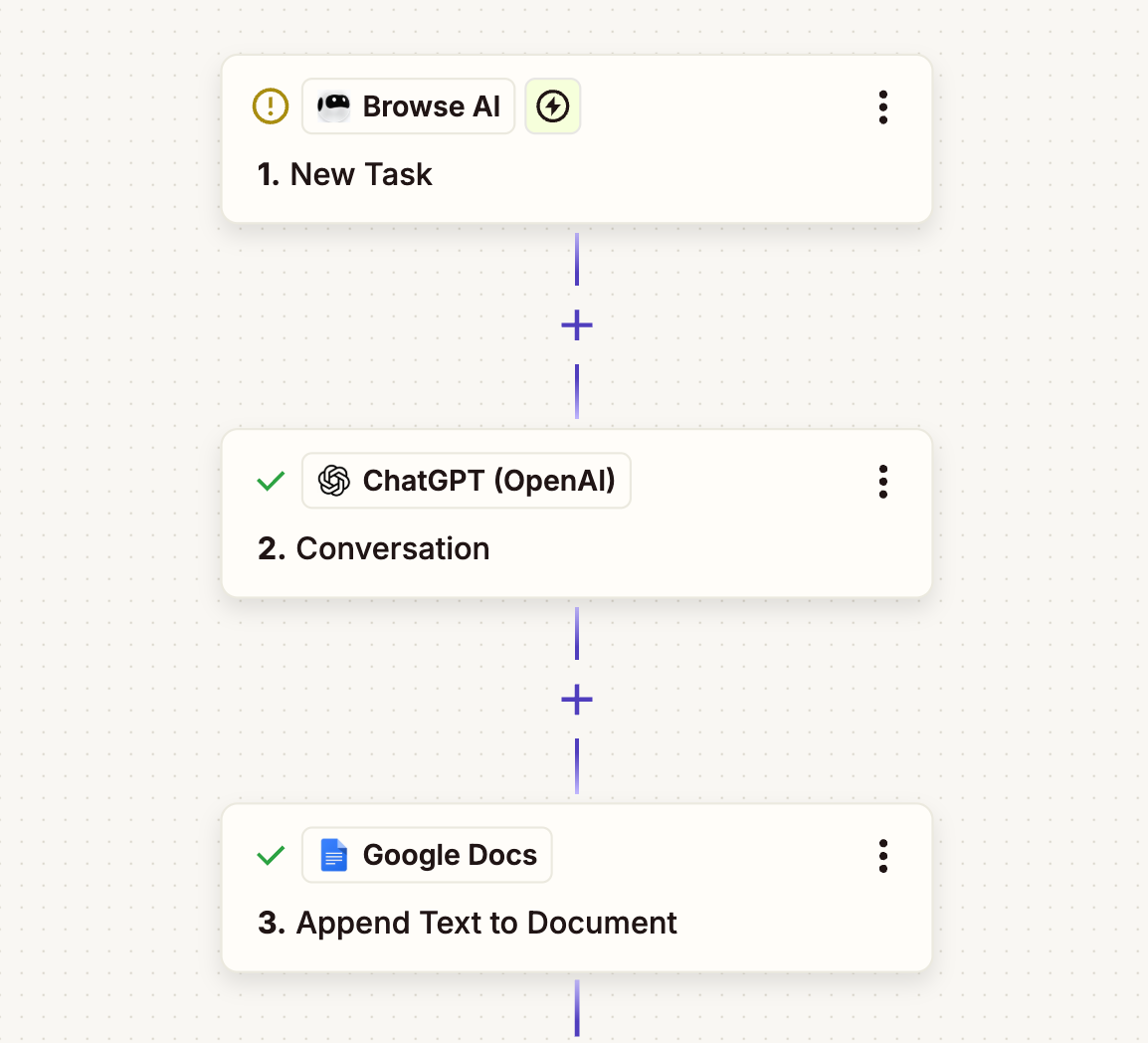
Summarize Browse AI results with ChatGPT and save to Google Docs
Spot trends in Browse AI data with ChatGPT and save insights to Google Sheets
Spot trends in Browse AI data with ChatGPT and share in Slack
Update your website from Browse AI
If your website relies on periodic updates from external sources, you can use Browse AI to effectively capture that data and a Zap to efficiently update your website as new information comes in.
Maybe you run an eCommerce store in Shopify and rely on a supplier who frequently updates their pricing. You could set up a Browse AI job to monitor your supplier's pricing and automatically update your own pricing based on those changes.
Or perhaps you run a website that lists upcoming events in your area. You could set up BrowseAI jobs to monitor for upcoming events, concerts, or conferences and automatically update your website as soon as new events are listed.
Whatever your use case, setting up a Zap to automatically update your website based on scraped data will be sure to save your team a lot of bandwidth and will also make certain your website is always up to date.
Update Webflow items from new executed tasks in Browse AI
Modify things in Bubble from new changes detected by Browse AI
Update Shopify products from new changes detected by Browse AI
Connect Browse AI with your task or to-do list app
Many people manage their daily workflow with task management and to-do-list apps like Notion, Todoist, and monday.com. With Zapier, you can connect Browse AI with your workflow tool of choice to automate the flow of information.
For example, the marketing team at an eCommerce company might use BrowseAI to monitor their website for new customer reviews, automatically syncing that information to a tool like Notion or Coda for later analysis.
Connecting Browse AI to your existing task management and organization tools can help you streamline your workflows and ensure you're always relying on the most recent data possible. Set up one of the Zaps below to start organizing your data.
Update Notion database items from newly-executed tasks in Browse AI
Create tasks in Browse AI when new projects are added in Todoist
Execute tasks in Browse AI and create new items in monday.com
Create new tasks in ClickUp for every executed task in Browse AI
Enhance your data gathering with Browse AI
Once you've connected Browse AI to Zapier, you're well on your way to building the foundation of a fully orchestrated data engine—no code required. From capturing real-time insights to routing them across the tools your team already uses, Zapier helps you transform scraped web data into actionable intelligence that fuels your next move.
And this is just the start of what you can do with Browse AI and Zapier. What will you automate first?
Related reading:
This article was originally published in March 2024, written by Michael Toth. It was most recently updated in July 2025 by Elena Alston.
